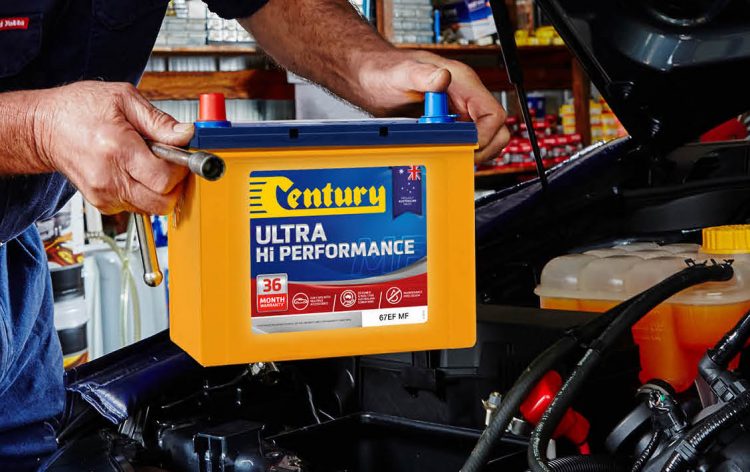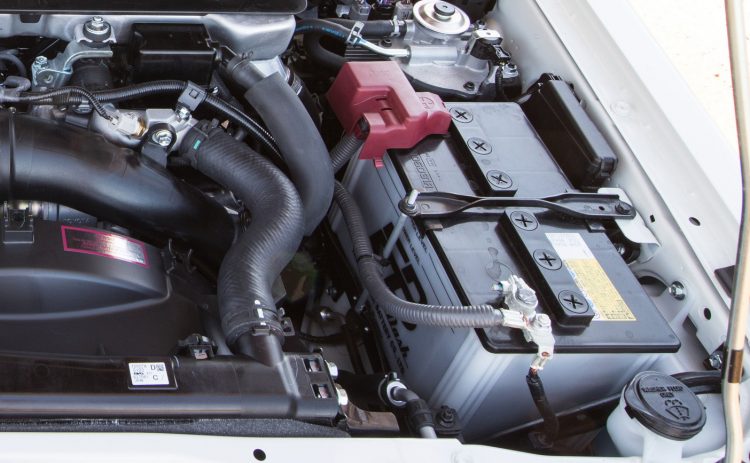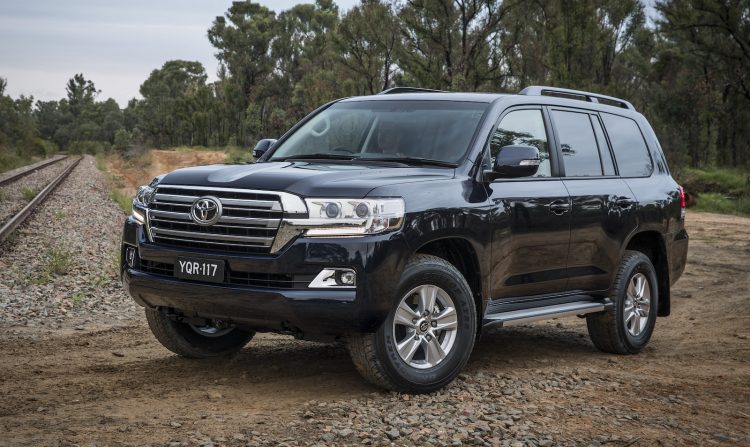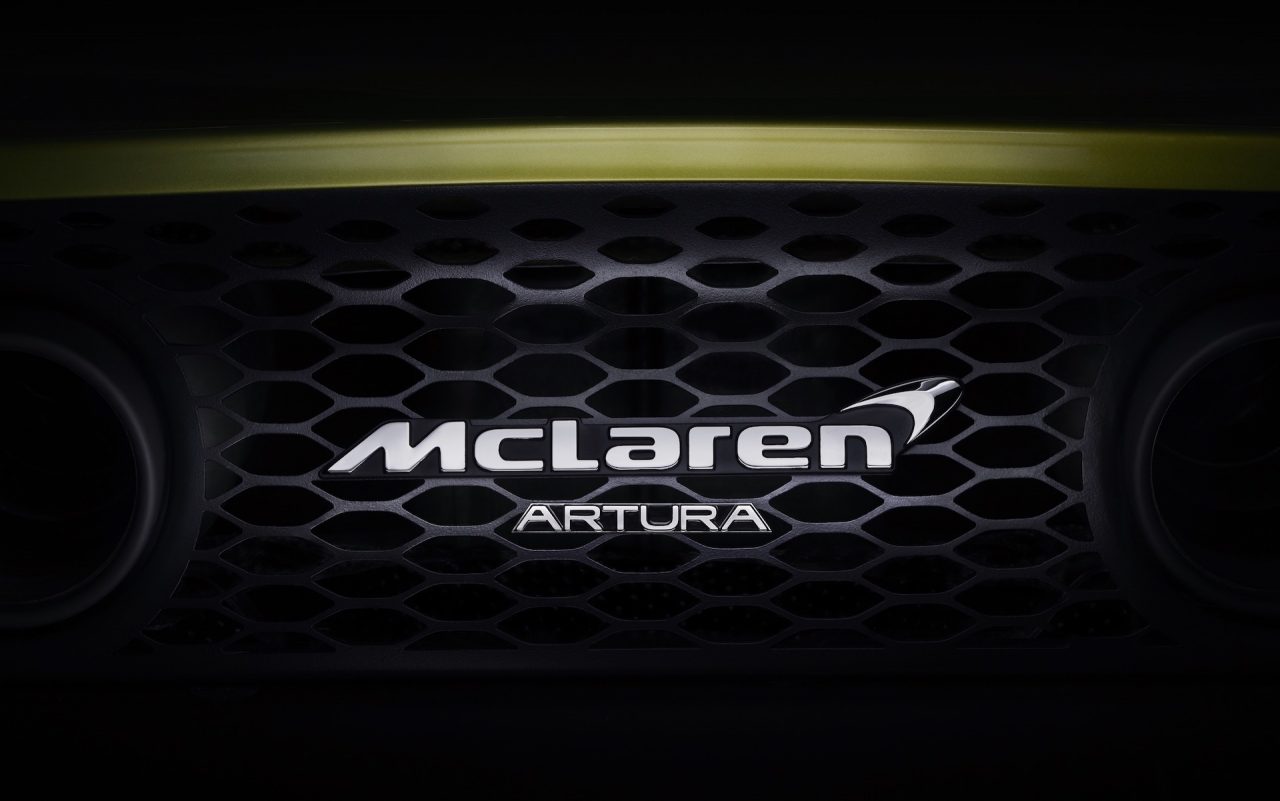You jump in the car, turn the key or push the button and the engine won’t tick over. It could be the battery. Batteries are probably the most important car item that people forget about because they last for years before needing to be replaced. And it’s only when something’s wrong is when you even give the battery a second thought. So, if your battery’s the problem, here’s your buying guide.
What type of car battery should I buy?
You can easily just go into the closest auto parts store or your mechanic and ask for them to fit a battery. However, it can be useful knowing what goes on under the bonnet. The various types of batteries on the market include:
Absorbed Glass Mat (AGM): A popular type of battery used in today’s cars full of electronic wizardry. They can withstand high-drain applications and repeated recharging cycles. Can withstand the high stress of stop-start ignitions.
Gel Cell: These contain a silica additive that lowers the amount of discharge, and ‘gelifies’ the electrolyte. The end result is better protection in hot weather or in high-heat applications, such as high-performance cars or heavy-duty vehicles generating heat under stress, such as towing and so on.
Valve Regulated Lead Acid (VRLA): These are available in both gel cell or AGM types. The difference is they are dry and sealed to mitigate leaks and spills. They are favoured for their quick recharge capability.
Wet Cell: Also known as the ‘flooded lead-acid’ type, these batteries are old school and were popular on older cars. They generally come in two types – serviceable or maintenance-free i.e. it has a lifecycle. Serviceable ones periodically require you to fill them with distilled water when the electrolyte level falls.
What to look for in a car battery
A car battery may look like a mysterious black box in the engine bay, but there’s a few handy things you should know about what to look for in a car battery.
Battery Age: You can tell how old a battery is by its alphanumeric code. The letter signifies the month, and the number signifies the year of manufacture. B-7, for example, means February 2016. It’s generally advised you buy a new battery in-store less than six months old.
Reserve Capacity: Known as ‘RC’ this lets you know how long your fully-charged battery can operate without the engine. A higher RC can be handy in case your alternator plays up and you need to run solely off battery power, which won’t leave you stranded.
Cold Crank: Cold cranking amps (CCA) is the figure that indicates how reliably the battery will start the engine in cold conditions without repeated cranking. Repeated cranking can wear on the alternator.
Battery Capacity: Measured in ‘Ah’ or ampere hours. Higher Ah means the battery can handle a load for a longer time, meaning a lower chance of your battery running out.
Warranty: Look for a generous warranty and refund policy if the battery expires before then. Manufacturers and dealers typically warrant their batteries for around two years.
A typical battery in a passenger vehicle can last for around four years before needing to be replaced, so go figure.
Car Battery Size Guide
Just like not all cars are made equal, so too are car batteries. Generally speaking, the bigger your car, the larger your car battery needs to be. Here’s a general guide as to what size your make requires:
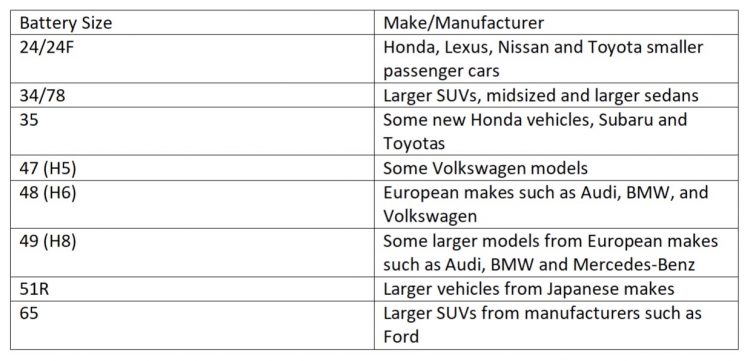
Of course, these are intended as a guide only. To find out what type of battery your car requires, it’s best to consult your owners’ manual. There you will find the exact specifications, and even some brand/model recommendations.
Car Battery Cost
There are numerous batteries on the market out there, and with that, an enormous price range. Generally speaking, the entry-level price is around $150 for a basic battery. However, prices can quickly shoot up to more than $400 if you’re looking at something a little more fancy.
Many cars these days typically have stop-start motors on them, and the constant stress on the engine because of this means you’ll likely need a deep cycle battery. Constantly stopping and starting the ignition can quickly put an end to cheaper batteries.
What’s more is that it can be confusing for the layperson to install a battery in a car with a stop-start engine. If you’re not familiar, a dealership or mechanic will only be too happy to install a battery for you and ensure everything is hooked up correctly. However, keep in mind they could then charge labour on top of the unit price. This could easily see the battery cost blow out to $500-plus.
